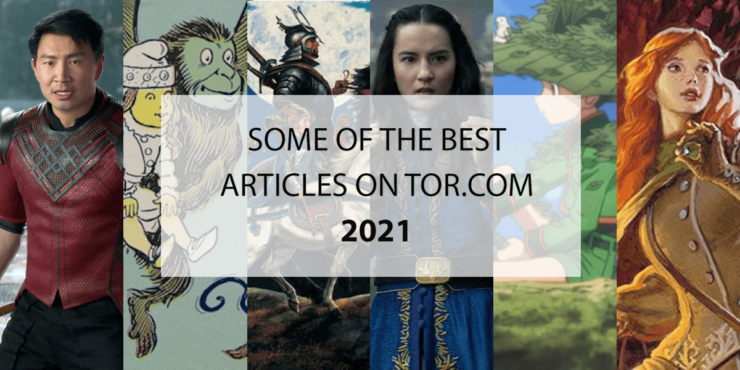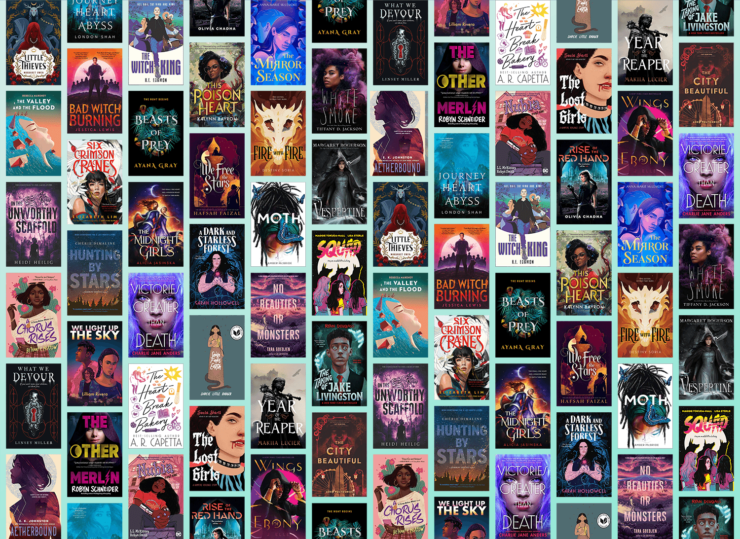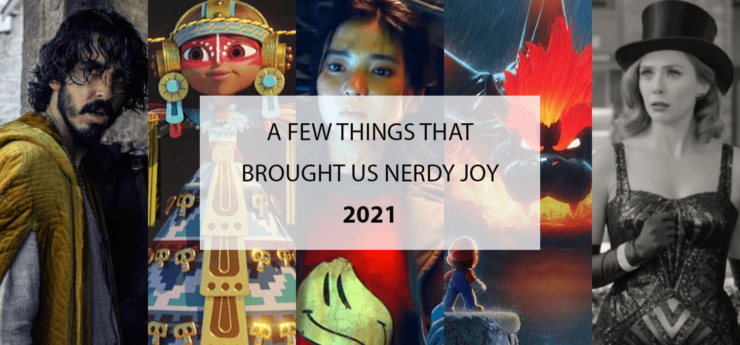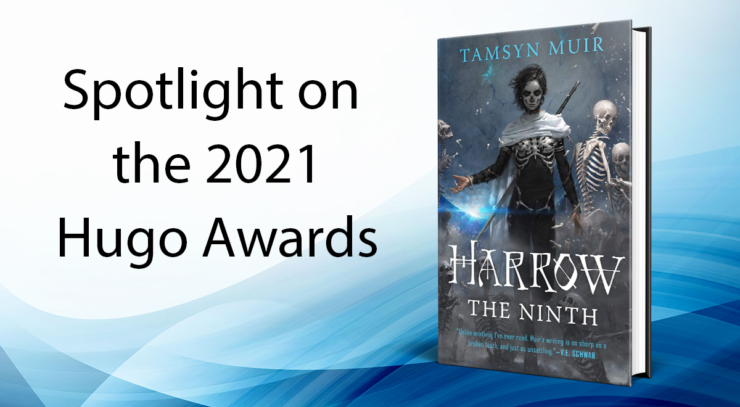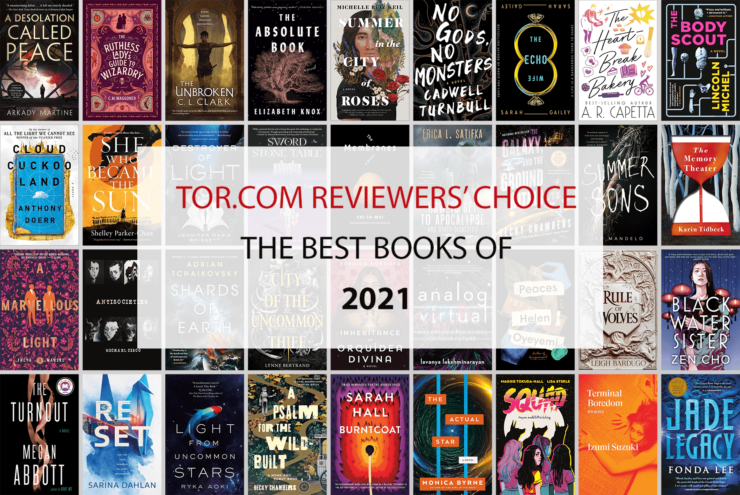As 2021 draws to a close, it’s time once again to look back and reflect on some of our favorite non-fiction articles from the last year: celebrations of favorite authors and characters, deep dives into the cultural and historical inspirations that inform new and classic SFF, essays about superheroes, epic fantasy, anime, and why we will never stop being grateful for the existence of Terry Pratchett and his work. These articles have made us laugh, occasionally tear up, and think about books, movies, TV, and fandom in new ways, convincing us to broaden our horizons and explore new perspectives we’ve never considered before.
While this list is focused on individual, standalone essays and articles, we’d also like to highlight our many regular columns—and for those who are always searching for something new to read, you’ll find an impressive array of fiction recommendations from regular contributors Alex Brown, James Davis Nicoll, and Jo Walton. This year also marked the launch of several new series, including the Close Reads column, curated by Leah Schnelbach; The SF Path to Higher Consciousness, in which Dan Persons focuses on classic science fiction movies; and Alyssa Burger’s insightful Teen Horror Time Machine series. Keith DeCandido launched the brand-new Star Trek: Enterprise rewatch, and Molly Templeton’s weekly Mark as Read column has inspired some of our favorite discussions between readers over the last year, beginning with the very first installment, “There’s No Wrong Way to Read a Book.”
We hope that you enjoy the selections below, and since these are just *some* of our favorite essays from the last twelve months or so, please feel free to tell us about the articles and columns that have stuck with you and/or made you smile this year!
Deep Dives Into Fantasy
Tolkien’s Orcs: Bolg, Shagrat, and the Maggot-folk of Mordor by Jeff LaSala
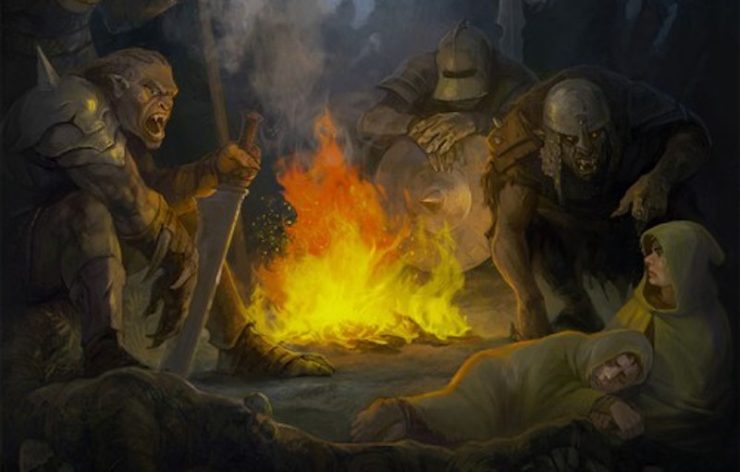
It should be understood that in J.R.R. Tolkien’s legendarium, the nature of Orcs—the spirit and agency of the Orcs—is not consistent all throughout. […] We as readers get to decide which version of Orcs we will imagine, but none of us gets to decide what others choose (nor decide what Tolkien must have “meant” with them beyond what he wrote). If you choose not to decide, you still have made a choice. Take them case by case or book by book. Or orc by orc. (Note: this is the first of Jeff’s three detailed articles on the history and evolution of Orcs in Tolkien’s work—read them all!)
The Problem(s) of Susan by Matt Mikalatos
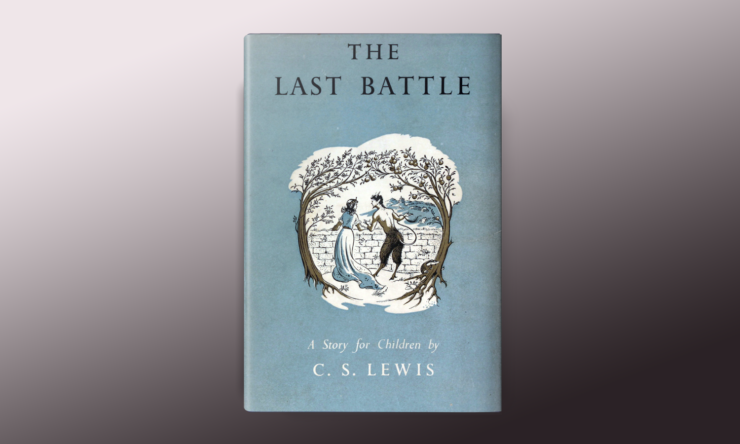
C.S. Lewis failed. He failed to clearly say what he was trying to say. He failed his readers. He failed Susan. When I read The Last Battle as a kid, and got to the moment when Susan was “no longer a friend of Narnia” I was shocked. Well, I thought, there are still some pages left to go. I’m sure she’ll be back before the end. But she wasn’t…
Anyone Can Be a Hero in Brandon Sanderson’s The Stormlight Archive by Ratika Despande
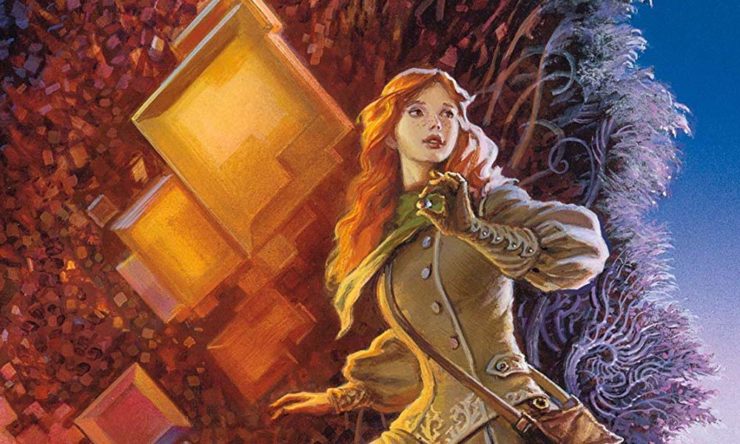
In these books, superpowers aren’t limited to a chosen one. Or even a few chosen ones. What I love about this magic system is that your powers don’t come from an external source—no special creature/weapon/serum/prophecy/heredity, etc. People who care about others and hold themselves and their behavior to certain moral standards become Radiants. You don’t need noble blood, or (any) education, or special favors, or any privilege whatsoever. You just need to give a shit about other people, and give enough of it. You have to be the kind of person who keeps their promises. And that is anything but easy, given the kind of problems life throws at people.
Daario Naharis and The Death of Khans: From the Mongol Empire to Game of Thrones by Mame Bougouma Diene
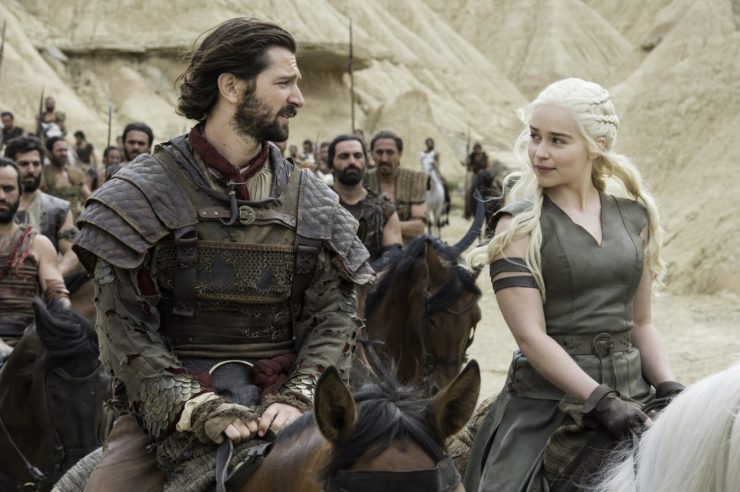
[B]eyond the worldbuilding of A Song of Ice and Fire, symbolically of course, there is more that ties Game of Thrones together with the history of the Mongols, especially in the stories of its queens, and that of the Queen, Daenerys Stormborn. We will take a deeper look at the connections and affinities reverberating between history and fiction, but can also learn from the story of one of the many figures swept along in Daenerys’ wake.
Actually Théoden Has the Best Dialogue in The Lord of the Rings by Elayne Audrey Becker
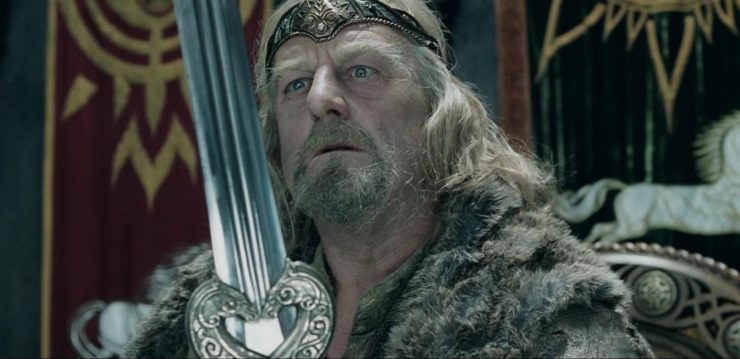
Between Samwise’s loyalty, Aragorn’s wisdom, and Gandalf’s sharp tongue, it would be easy to believe one of the main characters has the best lines of dialogue in Peter Jackson’s cinematic trilogy, right? Wrong.
The King of Rohan. Lord of the Riddermark. (Puppet of Saruman that one time he was vaguely possessed, but we don’t need to dwell on that.) In which other character will one find the perfect combination of inspirational regal stoicism and total dad energy?
***
Spotlight on The Wheel of Time
The Wrong Lesson: Nynaeve al’Meara and Bodily Autonomy by Sylas K Barrett
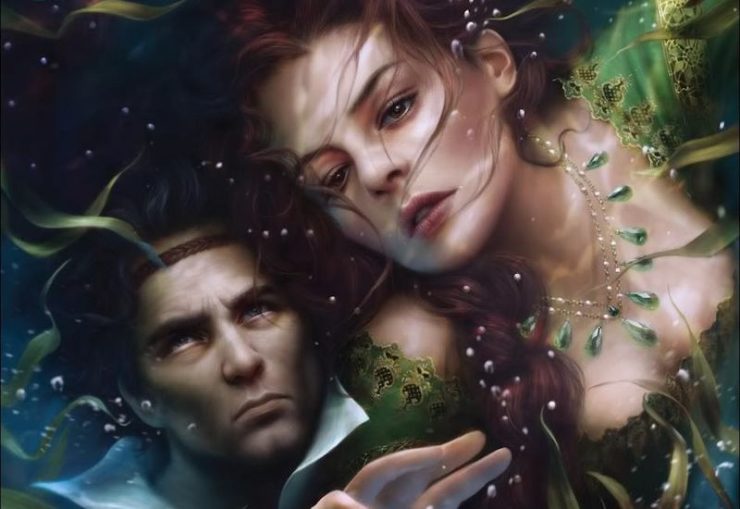
Elayne Heals Nynaeve’s black eye while she sleeps, without Nynaeve’s permission and with full knowledge that Nynaeve would actively refuse Elayne’s ministrations if she were awake. It’s a small moment, focused on Elayne’s boredom and on her evaluations of her strength in various applications of saidar, almost not worth mentioning. Until you consider the larger context of Nynaeve’s story arc, that is. Then a pattern begins to emerge that I find troubling…
The Queerness of Rand al’Thor by Ben Gierhart
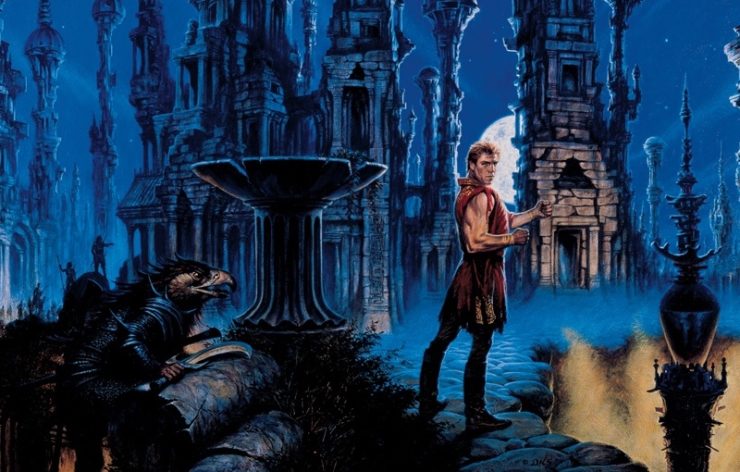
While I’m not here to tell you that Rand is queer in either sexual orientation or identity, I still believe that there is an inherent queerness to him worthy of examination, and—at least for queer readers of the series—doing so can enrich the reading experience and highlight how, in most ways, Robert Jordan’s seminal fantasy series was ahead of its time in terms of visibility and accessibility. At least it was and is for me, and I’ll tell you why.
Moving Beyond Binaries in Gender-Based Magic Systems: The Wheel of Time and Iron Widow by Allison Alexander
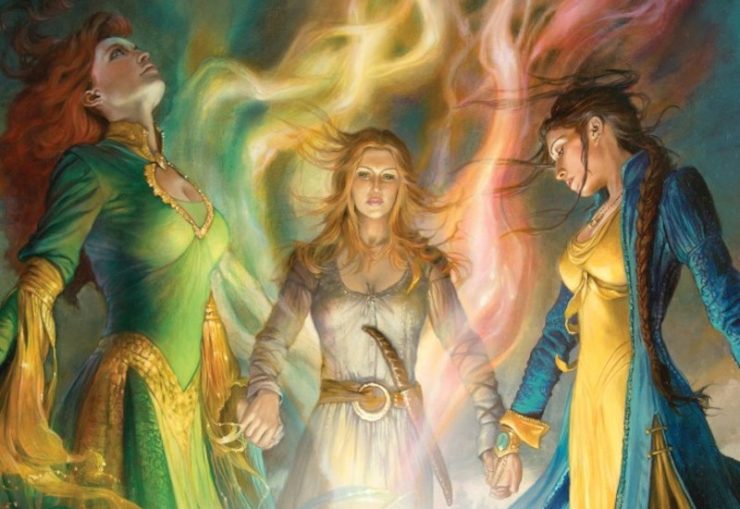
I appreciate the evolution that we can see between these two stories: first, a story that was written 30 years ago by a man who likely didn’t intentionally create gender barriers, but drew some hard lines anyway based on the restrictive societal norms he was familiar with; and second, a novel that was written this year by an author who intimately understands how society elevates certain identities for arbitrary reasons.
Welcome to the Family: An Open Letter to Old and New Fans of The Wheel of Time by Billy Todd
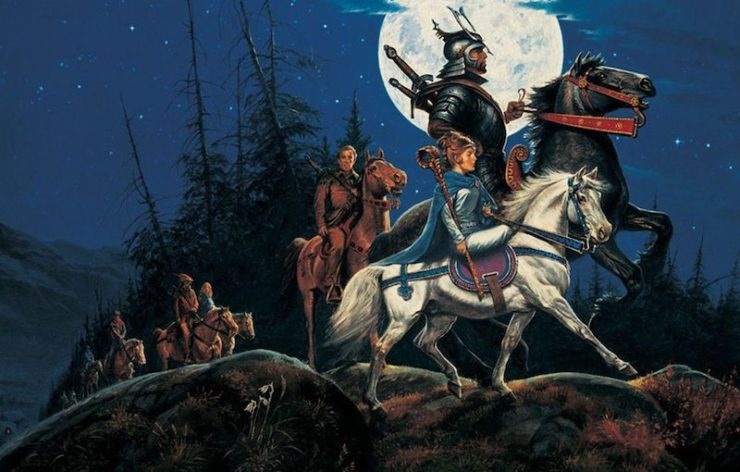
We are told that there are neither beginnings nor endings to the turning of the Wheel of Time, but this moment is a beginning, and it is an ending. For much of the fandom this is the End of an Age, a Breaking of what defines our secondary world, and a threatening of our interpretations of this work by a new Definitive Way That Things Are…
***
Superheroes and Other Screen Adaptations
Marvel at a Minimum: Or, How to Introduce the MCU to My Parents by Michael Livingston
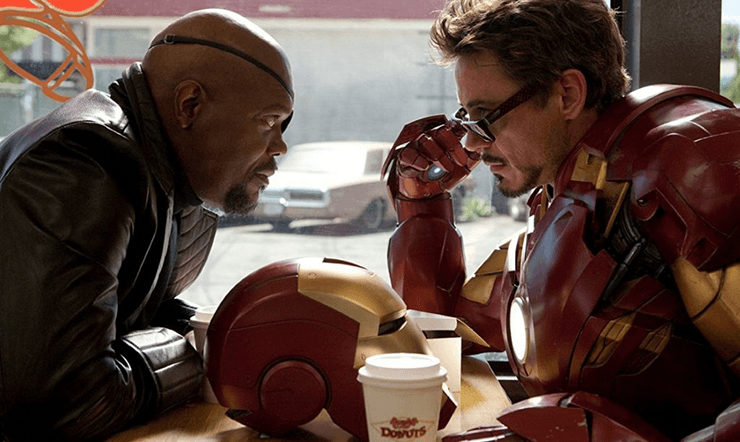
[A]s awesome as my parents are, I can’t reasonably ask them to watch all of these films to get to the end. I mean, if they get into them and love them, then great! Go for it! Otherwise, it’s just too much. So I thought I’d take a stab at cutting the necessities in half. That is, I want to create a list of the Marvel films that are necessary not just to get to Avengers: Endgame, but to truly get it when you get there. Since there are 20 (!) films before the dual package of Avengers: Infinity War and Endgame, I needed to cut things down to 10. Call it the Marvel Minimum.
How Meta Sitcoms and The Truman Show Shape WandaVision’s Stages in Grief by Natalie Zutter
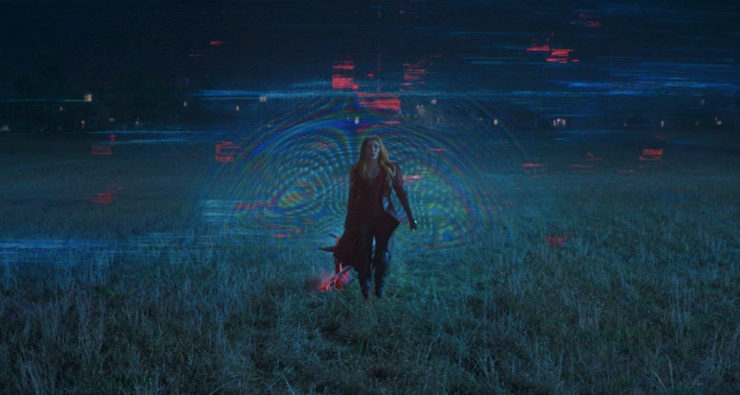
Once WandaVision’s sitcom conceit was established, it seemed likely that Wanda Maximoff’s decade-by-decade tour through the medium would culminate in a meta homage to Modern Family and other modern series in which the studio audience has been replaced by a documentary camera crew. After all, what more obvious format than the self-aware sitcom to show Wanda reaching the realization that all of this was her doing?
Yet WandaVision made sure that this inevitable confrontation was still surprising… because when Wanda started talking to the cameras, they talked back.
Okay, Do Superheroes Bone or Not? By Emmet Asher-Perrin
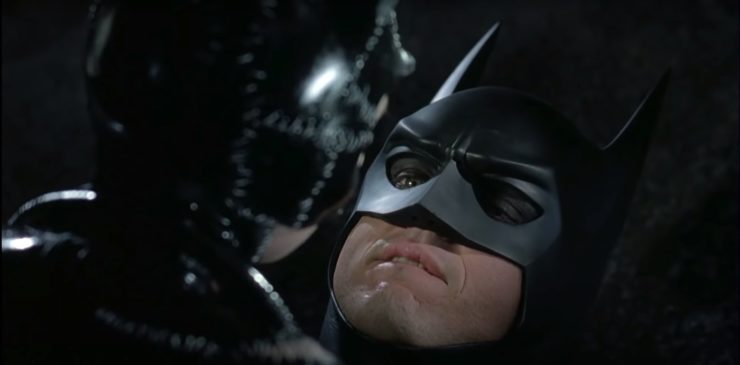
More often than not, the only times we see evidence of superheroes engaging in sexy activities (and no, I’m not talking about banter or walking around shirtless) on film is when they’re not on “active duty” as it were. They’re on a break from being a hero, a hiatus, or maybe it’s well before they gained their super status. It’s possible that things are happening off camera, sure, but the clear suggestion of sexual activity rarely comes up. And while superhero films are typically aimed at families, that’s still an odd omission to come across time and again, particularly when there seem to be unwritten rules of engagement—and toy sales—around the subject.
Becoming a Saint in Shadow and Bone by Dorothy Bennett
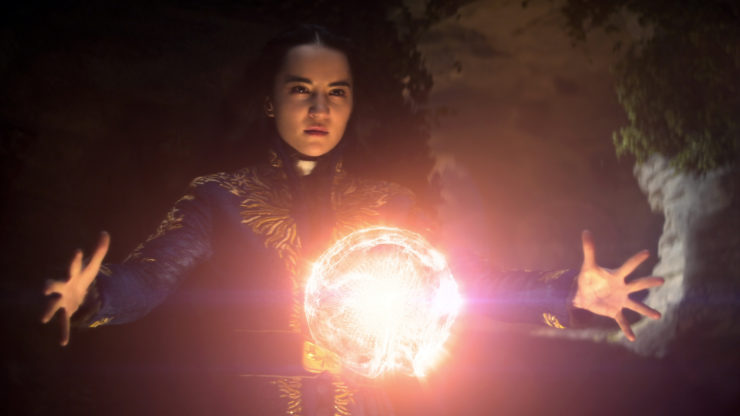
There is a fascinating tension between Leigh Bardugo’s Shadow and Bone series and Eric Heisserer’s Netflix adaptation of the books. Besides the combination of storylines that helped the show keep an addictive pace, showrunner Eric Heisserer has also made considerable alterations to the original trilogy […] most notably, removing the quandary of whether or not Alina is willing to slaughter a boatload of bystanders in her conflict with the Darkling. Whether or not a protagonist can commit murder for the greater good is a worthwhile discussion on its own, but whether or not a Saint can be a murderer is especially interesting. Particularly because in Bardugo’s trilogy, the author seems to point out how ineffective it is to judge morality between characters in a world with no central moral standard or code.
When a Bus Fight Is More Than a Bus Fight: Shang-Chi’s Cinematic Roots by Hubert Vigilla
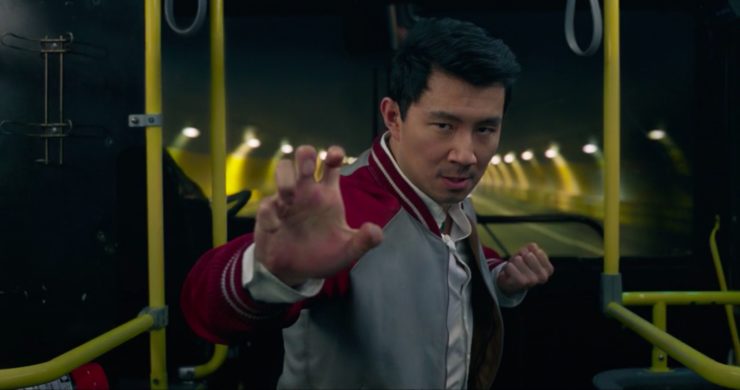
It’s unavoidable that Shang-Chi and the Legend of the Ten Rings would emulate the forms of martial arts cinema, and more overtly than the spiritual kung-fu movie Doctor Strange. What I found interesting was the mix of martial arts subgenres at play. There’s Jackie Chan-inflected Hong Kong action, nods to period kung-fu movies of the 70s and 80s, wuxia romance, and blockbuster fantasy that wouldn’t be out of place in Tsui Hark’s filmography.
At times, Shang-Chi feels likes a history of movie watching for Asian-American kids of a certain age.
The Watch Made a Mess of Adapting Pratchett — But It Had Some Interesting Ideas by Elizabeth Heritage
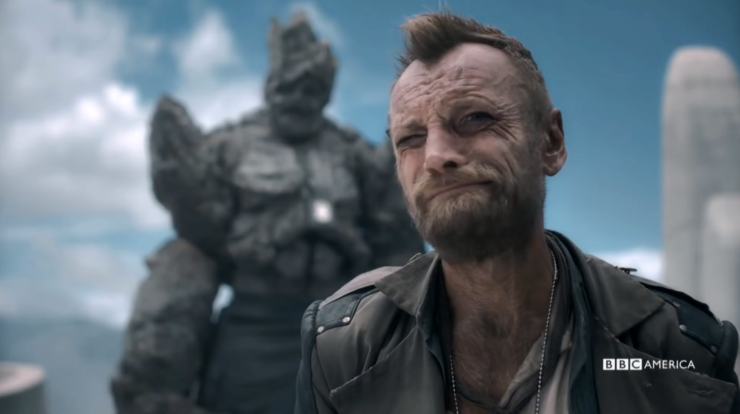
Let me start by saying that I will not be arguing that The Watch—BBC Studios’ TV adaptation of some of Terry Pratchett’s Discworld novels—is Good, Actually. It isn’t good: it’s a hot mess. But in amongst the janky chaos are some really interesting ideas that I want to honour before this whole thing sinks without a trace.
Eternals Is a Superhero Primer on Gnosticism by Leah Schnelbach
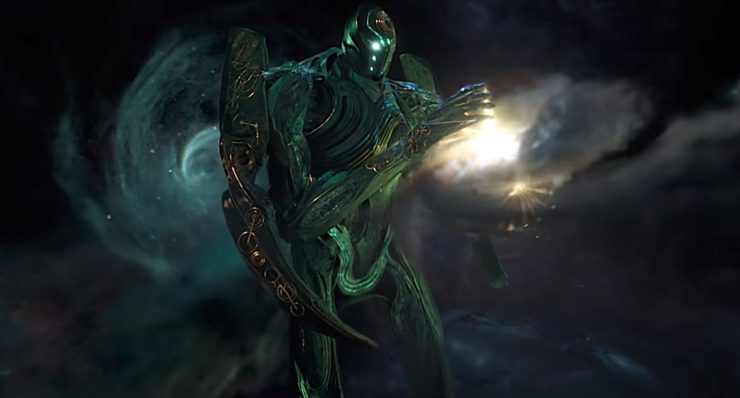
Eternals is basically “Let’s Attack and Dethrone God: The Movie,” with a lot of fraught debate about whether that’s the correct thing to do, who gets to decide, what the consequences will be, whether humanity is worth those consequences, etc. etc. And maybe your mileage varied, but for me that’s a fun fucking night out at the movies.
In light of that, I thought it might be fun to bounce through some of the more obvious religious imagery the movie plays with, and then to look at the bigger overarching mythos Zhao leaves us with. And then we can debate as much as y’all want.
Shang-Chi: A Diasporic Love Letter to Asian Cinema by Eliza Chan
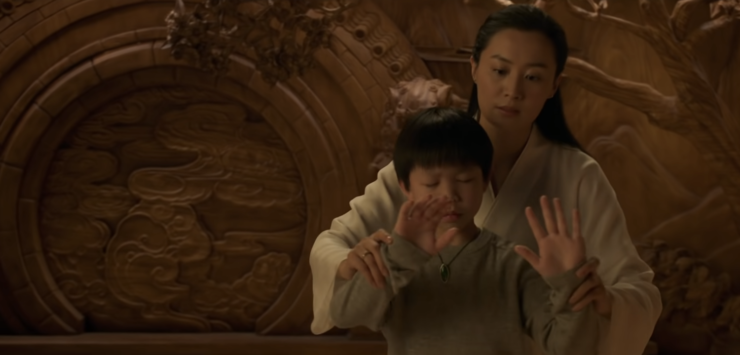
It’s not a spoiler to say Shang-Chi and the Legend of the Ten Rings is a martial arts film. After all, superhero films are about action, one-on-one fights, and big set pieces. (Thankfully, it’s no Iron Fist.) The film delivers the dynamic martial arts choreography made famous to the west by the likes of Bruce Lee and Jackie Chan. It ticks all the boxes for fans of the genre: a training montage, a wooden practice dummy, and a weapons upgrade; it even throws in a tournament (okay, fight club) for good measure. Honestly Shang-Chi could have stopped there and it would’ve been enjoyable enough. But it goes further. It engages and gently subverts other hallmarks of Asian cinema—both those made in Asia and the portrayal of Asia(ns) in English-speaking productions.
***
Perspectives on History, Community, and Culture
The History and Politics of Wuxia by Jeannette Ng
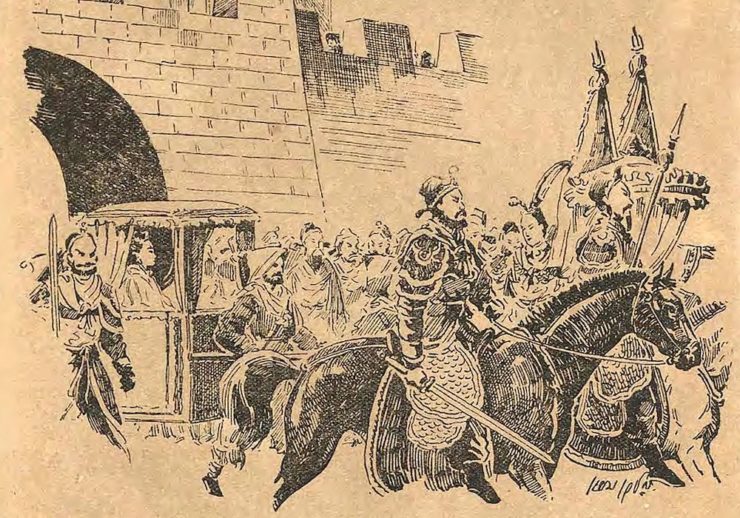
It is easy to think of wuxia in universal terms with broad themes of freedom, loyalty and justice, but largely divorced from contemporary politics. These are stories, after all, that are about outlaws and outcasts, existing outside of the conventional hierarchies of power. And they certainly do have plenty to say about these big universal themes of freedom, loyalty and justice.
But this is also a genre that has been banned by multiple governments within living memory. Its development continues to happen in the shadows of fickle Chinese censorship and at the heart of it remains a certain defiant cultural and national pride intermingled with nostalgia and diasporic yearning. The vast majority of the most iconic wuxia texts are not written by Chinese authors living comfortably in China, but by a dreaming diaspora amid or in the aftermath of vast political turmoil.
Rewriting the Tradition: Destiny and Diaspora in Shelley Parker-Chan’s She Who Became the Sun by 墨客hunxi
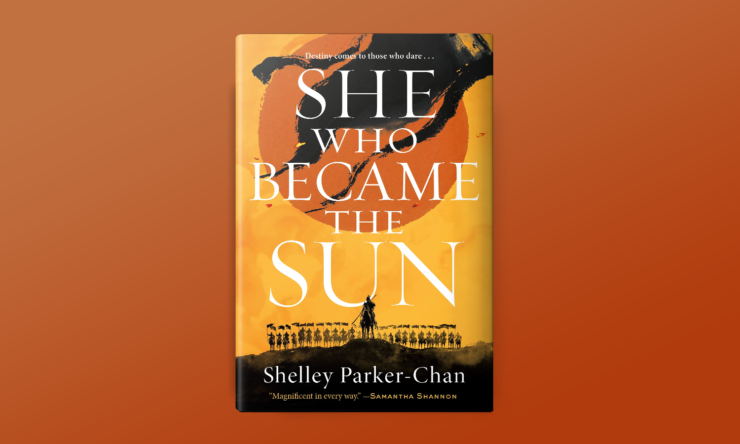
In the Chinese tradition, there are three thousand years of thinkers, philosophers, essayists, poets, novelists, and satirists that contributed to the culture. There are schools of thought that metastasize and spill over into squabbling branches that snipe at each other for subsequent centuries; there are critics and scholars and libraries full of annotations buried in intertextual commentary. Faced with this unwieldy, ponderous inheritance, each author working with the Chinese tradition has to choose—how much of the tradition will they lay claim to, to reimagine and reinvent?
Finding Empowerment in Diaspora Identity: The Last Fallen Star and Lirael by Wendy Chen
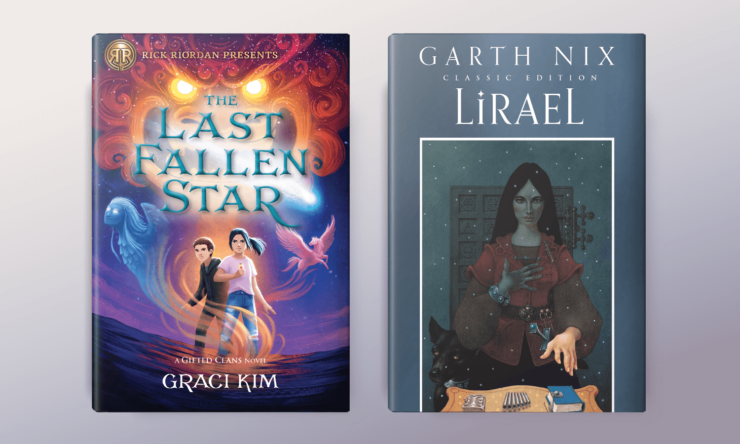
For those of us of Asian descent growing up in white-dominant countries, a message we frequently receive, implicitly and explicitly, is that parts of ourselves are inferior—our looks, our traditions, our names. In the face of such overwhelming messaging, the value of our own cultural heritage can be buried and may take us a while to discover. Riley and Lirael’s journeys were powerful reminders to question what I’ve been told is important and valuable—to the world, and to myself.
***
All About Dune
Lawrence of Arabia, Paul Atreides, and the Roots of Frank Herbert’s Dune by Kara Kennedy
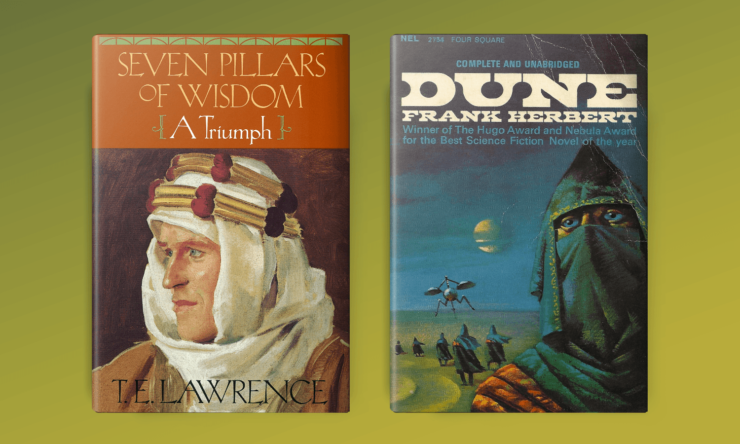
[A]lthough Lawrence’s narrative was certainly an inspiration for key aspects of Dune, there are also critical contrasts in the portrayals of Lawrence and Paul, the Arabs and the Fremen, women, and religion. […] This overview will demonstrate how Herbert adapted and modified elements of Lawrence’s story to create a world in Dune that is both familiar and new.
David Lynch’s Dune Kept Science Fiction Cinema Strange by Lincoln Michel

Everyone knows that David Lynch’s 1984 adaptation of Dune is bad. Hell, this film—dubbed “worst movie of the year” by Roger Ebert—was such a disaster it basically drove Lynch from mainstream films. It’s one of SFF’s most famous flops. A disaster. So please believe me that I’m not trolling or looking for a controversial “hot take” when I say that Lynch’s Dune is one of my all-time favorite science fiction films, and perhaps the SF movie that influenced me more than any other.
…Yes it was a mess, but it also was a film that felt strange in a way I wanted science fiction to be. With alien worlds that seemed alien, and a space opera that actually felt beamed from a far region of space.
The Muslimness of Dune: A Close Reading of “Appendix II: The Religion of Dune” by Haris Durrani
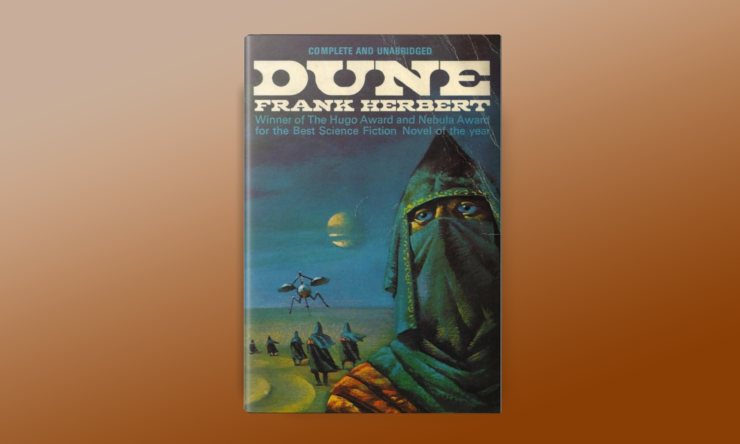
As much as the saga examines tensions between east/west, colonized/colonizer, and Brown (or Black)/White, it also interrogates questions internal to Islam. Dune is orientalist and conservative, but also, and sometimes frustratingly at the same time, thoroughly Muslim. Its Muslimness is not only a function of its Arabic words; its quotations and paraphrases from the Qur’an, prophetic teachings, or Muslim authors; or its references to Muslim histories. […] Ultimately, it is through, and not apart from, the engagement with Islam and Muslims that the Dune novels explore their central themes about the relationship between religion, ecology, technology, capitalism, and anti/colonialism.
Young Women in SFF
The Power of Adolescent Anger: L’Engle’s Meg Murry and Pratchett’s Tiffany Aching by Dorothy Bennett
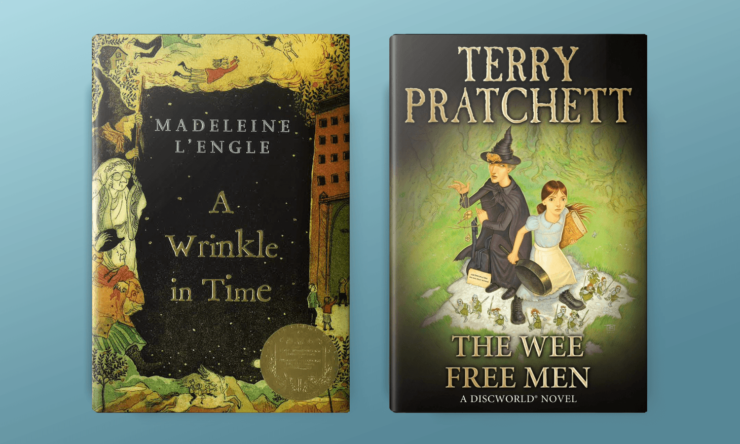
We are all familiar with works that insist that adolescent girls are vulnerable or powerless—or only powerful through goodness, purity, and traditionally passive, “feminine” traits and behaviors. […] This creates a biased view of what adolescent girls should be, as well as a narrow view of what they can choose to become. Do both L’Engle’s Meg and Pratchett’s Tiffany fully exemplify this in their stories? I would say yes and no.
Dangers Untold: Growing Up With Alice’s Wonderland and Sarah’s Labyrinth by Architta Mitra
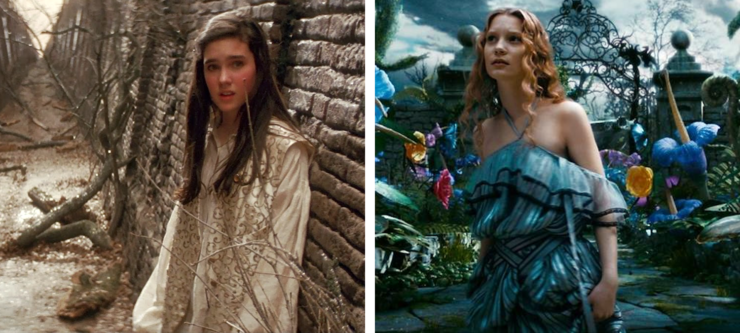
Between the bullying I faced at school and a slew of family problems at home, my teenaged self found an escape in portal fantasies. […] Stories of girls disappearing down rabbit holes or being whisked into a fantastical underworld—populated by strange creatures and even stranger men—toppling law and order, and then triumphantly returning to real life, became favorite templates onto which I could project my fantasies and trauma.
***
Queer Issues and Experiences in SFF
Queer Dads: Demons and Machines in Sorcerer’s Son by Phyllis Eisenstein and the Terminator Franchise by Shelley Parker-Chan
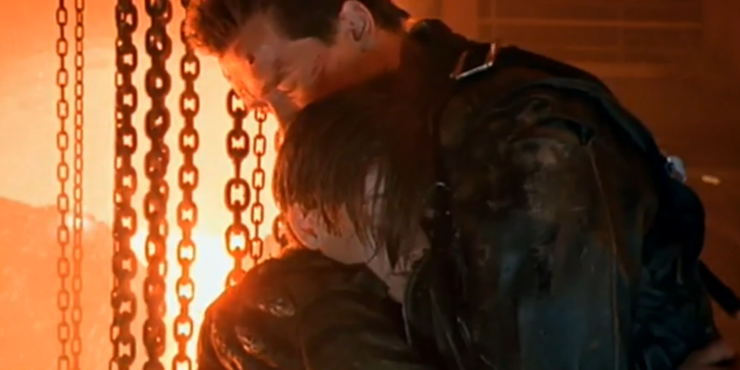
Sorcerer’s Son is a classic quest-based high fantasy, set in a pseudo-medieval European world of knights, castles, sorcerers and demons. The hero, a young man named Cray who has been raised in protective isolation by his sorceress mother, ventures into the world to find the identity of his father who vanished before his birth. So far, so standard. But unlike much of modern YA, where the sole focus is on the young protagonist and their coming-of-age journey, Sorcerer’s Son tells another side of the story.
Terry Pratchett Was Never Here for Your Transphobic Nonsense by Emmet Asher-Perrin

Gender roles are a thing that Pratchett gleefully exploits within his work because he knew full well that anyone could be anything. Even within the sharp gendered confines of Discworld magic—men to wizardry and women to witch covens—he breaks those rules with great deliberateness. Pratchett himself may not have intentionally created a trans witch or wizard, but that doesn’t mean that none of those characters are trans. He would be the first person to acknowledge how stories behave in another person’s hands, and how their reading will change what’s on the page.
Witches Have No Homes: Magic, Transformation, and Going Over the Rainbow by May Peterson
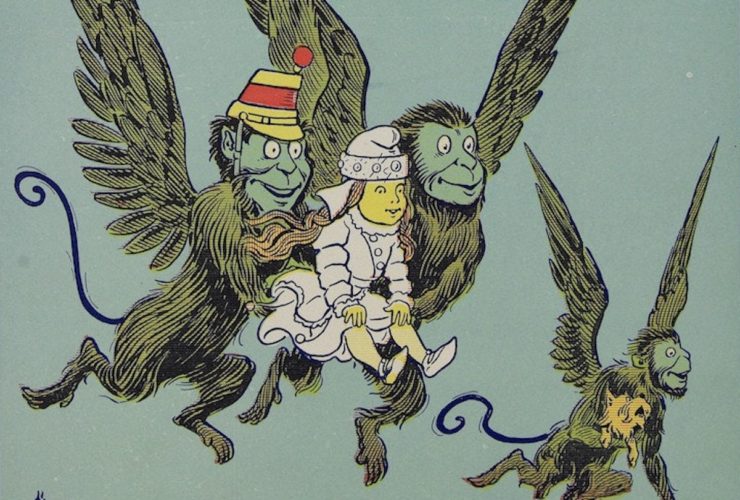
Here’s the thing about Dorothy. The thing I never thought to ask, even though it was staring me in the face, a question threading through my connection to all these other imaginary surrogate selves with their jeweled implements and cherry blossom hair.
Do the people back in Kansas also think she is a witch? And if so, good witch or bad?
A Manga for the Transgender Soul: Rumiko Takahashi’s Ranma 1/2 by Ryka Aoki
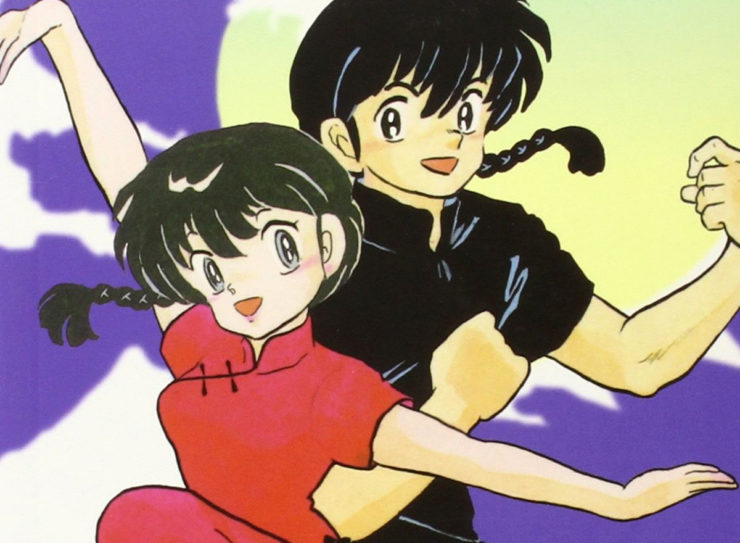
For me, Ranma 1/2 was more than a coming-of-age experience—it was an epiphany. This work not only challenged so many prevailing (and rather depressing) thoughts and philosophies about being trans—but did so as a manga. […] What I found so refreshing about Ranma was that the process of transition—the part that seemed to dominate so much trans literature—was not a big deal.
Rather, it was, “Okay, I’m a girl, now what?”
***
Close Readings: The Gothic, Horror, and Vampires
The Cruel Optimism of the Gothic: Wealth, Class, and Villainy in YA Fiction by Allison Saft
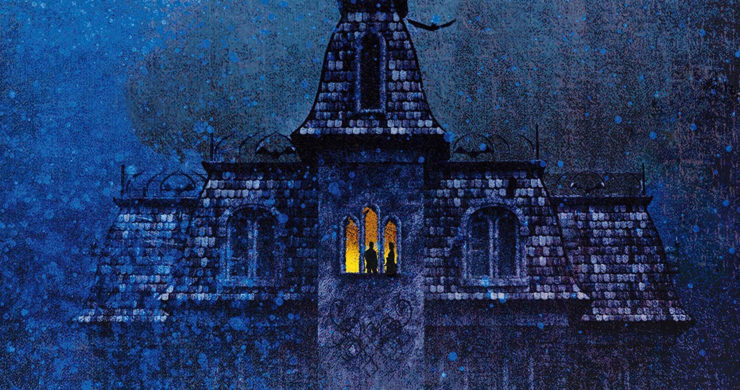
The Gothic is back in young adult fantasy, and with book deals slated into 2022, it shows no signs of going anywhere. It’s tempting, I think, to explain this Gothic resurgence as a symptom of YA fantasy leaning Darker & Edgier. The aesthetic conventions of the genre—crumbling manors, flickering candelabras, and brooding lords—certainly lend themselves well to that end. But this explanation hardly gets to the bottom of things.
The question still remains: why has this set of images become so alluring to us? Why this 18th- and 19th-century form, and why does it so capture the hearts of 21st-century readers?
Religious Horror and Horrific Religion in Midnight Mass by Leah Schnelbach
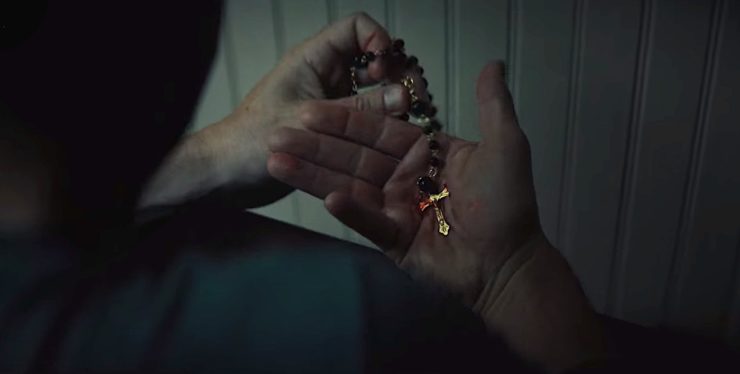
Of all the subgenres of horror, religious horror tends to be my favorite. When it’s good, you get all-time classics like Rosemary’s Baby, Hereditary, and The Exorcist. When it’s over-the-top, you get operatic shit like The Omen, Hellraiser, or, for my money, Constantine. And when it commits to being goofy as hell, you get… The Conjuring series. Even the bad examples of the genre will provide decent exorcism scenes or fun Satanic cults. And religious horror has inspired fantastic comedy like Good Omens, SNL’s Exorcist II, and some of the funniest scenes in This is the End.
This essay is going to dive into Midnight Mass’ place in the tradition of religious horror, and the Catholic iconography used—and it’s going to spoil everything…
Fear of Desire: Dracula, Purity Culture, and the Sins of the Church by JR. Forasteros
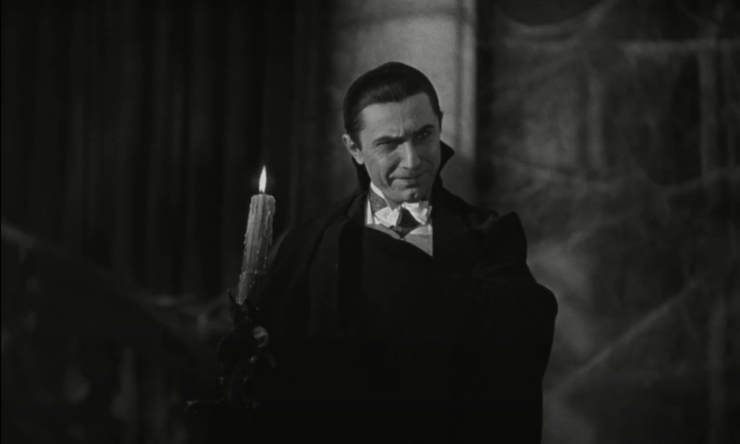
And here is the true danger of the vampire: by externalizing our fear of desire into a (fictional) form we can exorcize (by way of a stake to the heart), we imagine we have defeated the monster. Just as by externalizing our fear of desire into a (female) form we can control (through purity rings, one-piece bathing suits, and calls for modesty), we imagine we have conquered desire. But we have learned to our pain that the real danger lies not in vampires or the female form, but in those charismatic men in the pulpits and positions of authority.
***
Notes on Anime
Shonen Anime and the Myth of Meritocracy by Minyoung Lee
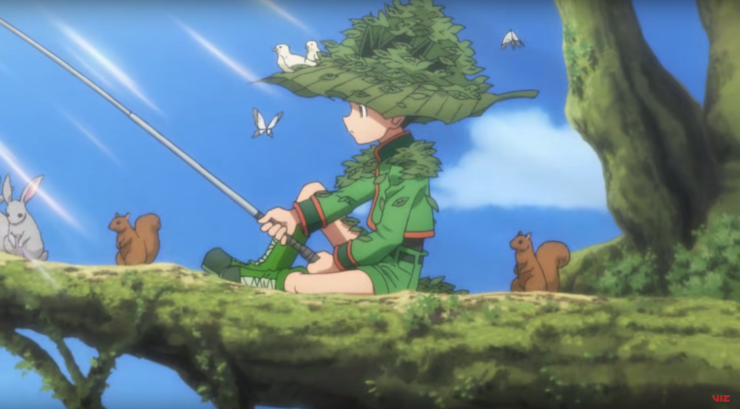
During the pandemic, I found comfort in marathoning shonen anime. Hunter x Hunter, a series I started in my teenage years but never finished, was the one to start it all. Hunter follows 11-year-old Gon’s journey on becoming an elite Hunter to find his long-lost dad, as he befriends other Hunters, forms rivalries and allyship, and endures grueling training to overcome the increasingly more challenging obstacles in his way. I watched all 148 episodes back-to-back, cheering this boy’s journey on growing stronger and more confident. Each life-or-death fight and exaggerated decapitations felt soothing and familiar—not what I’d expected I’d be feeling watching these scenes…
How I Learned to Stop Worrying and Watch Anime by Kali Wallace
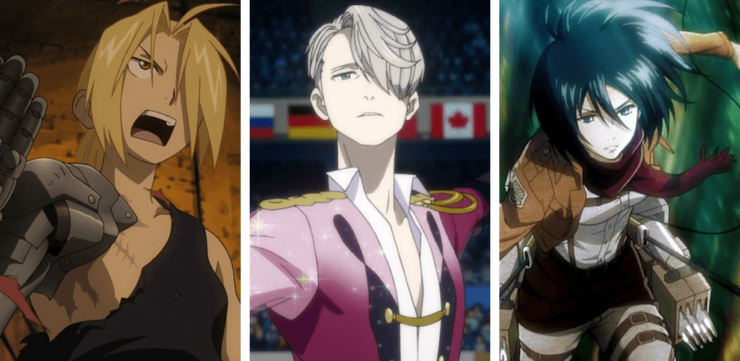
When we get right down to it, it’s easy to find excuses to avoid trying A New Thing in our media and entertainment. We assume that if we didn’t like before, we won’t like it again, and that’s that. And there isn’t necessarily anything wrong with this! Nobody is under any obligation to like—or even try—anything, even beloved and wildly popular things. Life is too stupid and full of pain to endure entertainment that doesn’t bring us joy.
But. Sometimes we’re wrong.
***
Finding Joy in Fairy Tales and Poetry
Five Fairy Tale Mashups That Show How All Our Stories Are Connected by Rachel Ayers
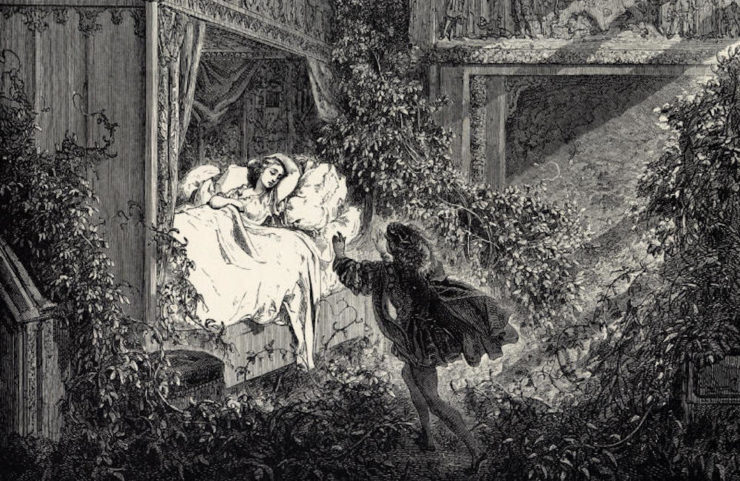
…I think the fundamental appeal of these tales is that they remind us that all our stories are connected, and perhaps at a closer degree than we generally realize. These mashups assure us that if you take the time to step back and see the big picture, you’ll find that we’re all in this together.
Weird as Hell: Falling in Love With Speculative Poetry by Diane Callahan
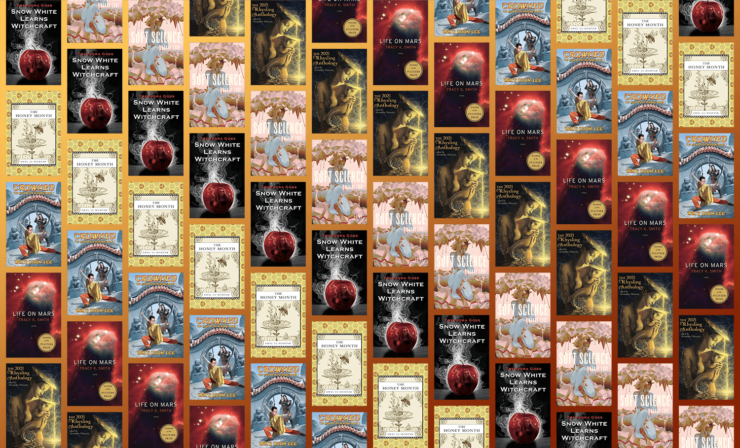
So, if poetry’s purpose is—at least in part—to paint the familiar in an unfamiliar light, then what happens when the subject matter is also deeply unfamiliar, or doesn’t even exist? The effect is often an added layer of defamiliarization. Speculative poetry transmutes the ordinary into the extraordinary, supercharging the reader’s attention on one particular idea or image.
***
Thoughts on the Current Moment, & Looking Toward the Future
Is There a Queer Future Without Queerphobia? by Emma Leff
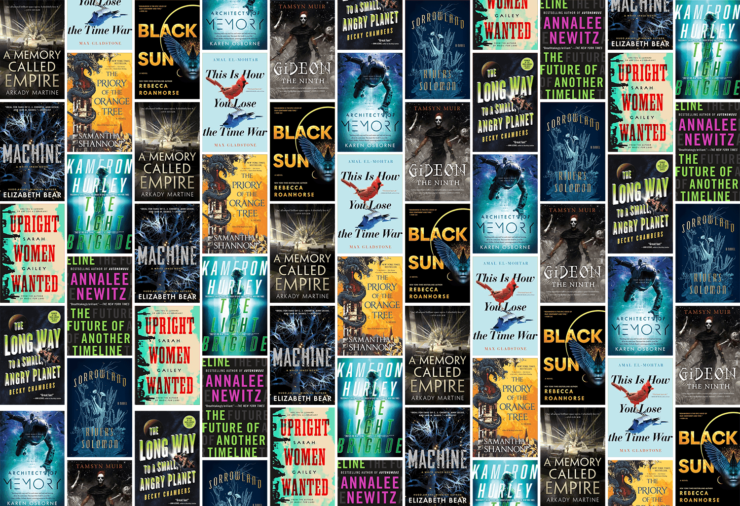
To be queer is inherently to challenge dominant culture—but when there’s no dominant cis/straight culture in a book for characters to challenge and respond to, a vital aspect of queer and trans identity is flattened, nuance erased. I don’t mean this as a critique of any of the books mentioned above. I just want to point out that, though those futures are happy ones to imagine, they might not be the only right way to imagine queer and trans representation.
Can I Interest You in a Dark Carnival? Bo Burnham, Ray Bradbury, and Our Modern Hall of Mirrors by Leah Schnelbach

You might be asking yourself, why are you talking about Inside, Bo Burnham’s latest comedy special, on this site? First of all it’s a remarkable comedy special, filled with repeating imagery and echoing language that makes me think of a linked short story collection—like if A Visit from the Goon Squad or The Martian Chronicles were reworked into a stand-up show. The other reason is that I’m a person prone to earworms, and this thing has blown past earworm and landed in Nam-Shub territory. I watched the special last week and I’ve had “making a literal difference, metaphorically” and “Oh shit—you’re really joking at a time like this?” looping in my head continuously for days. Maybe this will get them out. But I encourage you all to go watch it because I am neither the first, nor shall I be the last, to say that Inside is probably the definitive work of art to come out of the pandemic.
But still you might ask, why am I talking about it here? Because at just about the halfway point, the special veers into fantasy/horror of a very specific nature.
Moviegoing During a Pandemic by Leah Schnelbach, Christina Orlando, and Emmet Asher-Perrin

The debate about going out to movies during what is still very-much-ongoing pandemic keeps spiking every time Denis Villeneuve or Christopher Nolan gives an interview, and every time a movie trailer ends with the proud declaration: “Only in Theaters.”
Because obviously, it’s not quite as simple as: “don’t go to in-theater movies yet, it still isn’t safe”—the way we experience art is important, the communal nature of moviegoing is important, and supporting the work of artists, especially marginalized artists, is important. As the months have gone on, the three of us have talked endlessly about our relationship with movies in general and theatergoing in particular, and after the one-two punch of seeing The Green Knight and Shang-Chi together we decided to hash out some thoughts.
***
All caught up? Feeling nostalgic? Maybe just ready to leave 2021 far behind? Then check out our “Some of the Best…” article round-ups from previous years: 2020, 2019, 2018, and 2017.










